Regular tessellations
Categories: gcse geometry tessellations symmetry

A tessellation is created when one or more shapes are used to completely cover a plane, with no gaps or overlaps. An alternative name for a tessellation is a tiling. A tiled floor is a real-life example of a tessellation.
A regular tessellation is a special case where the plane is covered by shapes that are all regular polygons of the same size.
Regular tessellations also need to use edge-to-edge tiling, as we will see in a moment.
There are only three regular shapes that can form regular polygons. They are:
- Equilateral triangles.
- Squares.
- Regular hexagons.
We will look at these cases, and also learn why no other regular tessellations are possible.
Here is a video:
Equilateral triangles
Here is a regular tessellation made up of equilateral triangles:
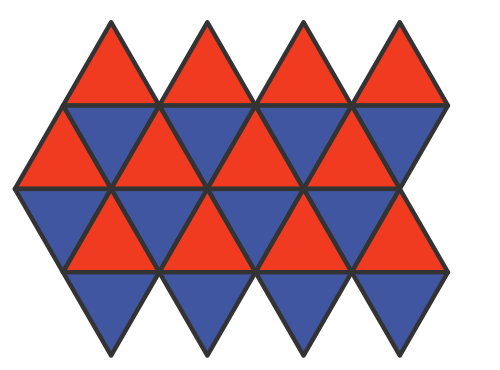
Any triangles will tessellate, but if the triangles are not equilateral triangles it won't be a regular tessellation.
In the scheme above, every edge of any triangle is joined to a complete edge of a different triangle. There are no edges that join two or more other edges. This is called edge-to-edge tiling.
The example below is not edge-to-edge tiling:
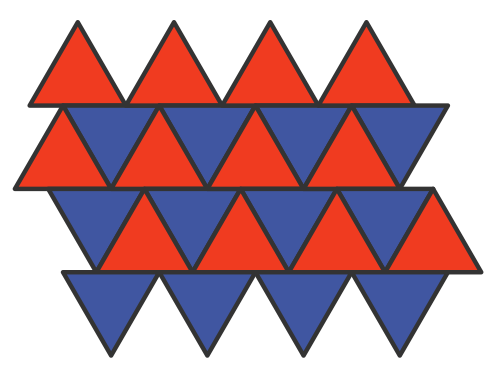
Here notice that the horizontal bands of triangles are shifted relative to each other, so the edges of some triangles do not line up. This means that in some cases an edge of one triangle meets two edges of other triangles:
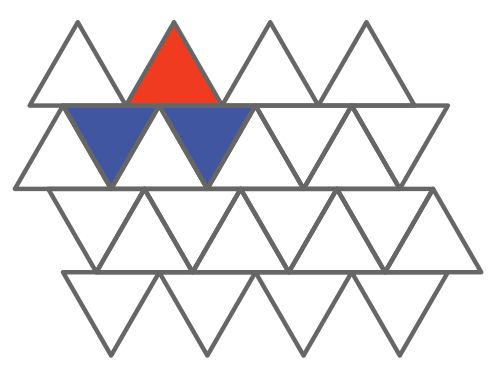
Here the base of the red triangle meets the edges of two different blue triangles.
Squares
Here is a regular tessellation made up of equilateral squares:
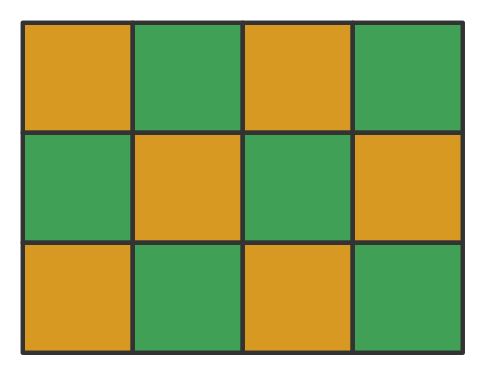
Rectangles, or any other quadrilaterals, will tessellate, but if the quadrilaterals are not squares it won't be a regular tessellation.
Regular hexagons
Here is a regular tessellation made up of regular hexagons:
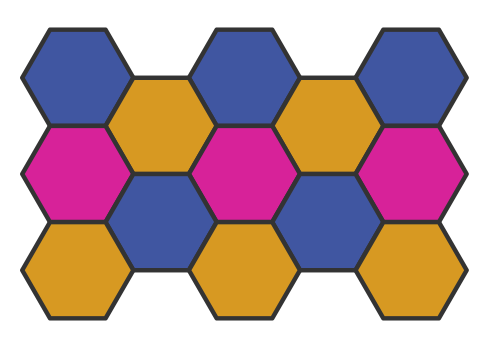
Why will no other regular polygons tessellate?
The only regular polygons that tessellate are those with 3, 4 or 6 sides.
To understand why this is, we will look at a couple of regular shapes that don't tessellate. First, regular pentagons:
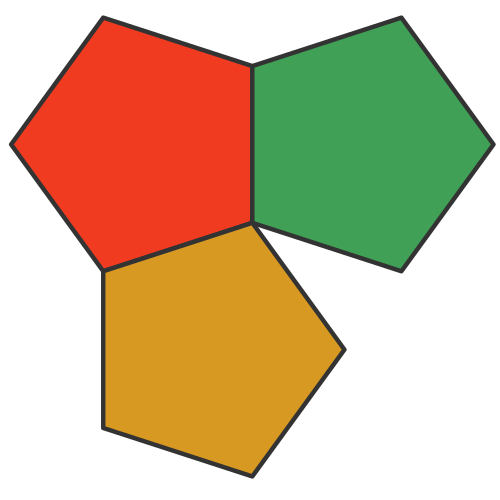
If we place three regular pentagons (5 sides) together, it leaves a small angle. The angle is too small for another pentagon to fit, so it is impossible to fill the plane without the shapes either overlapping or leaving a gap.
If we try the same thing with regular heptagons (7 sides) we see a slightly different issue:
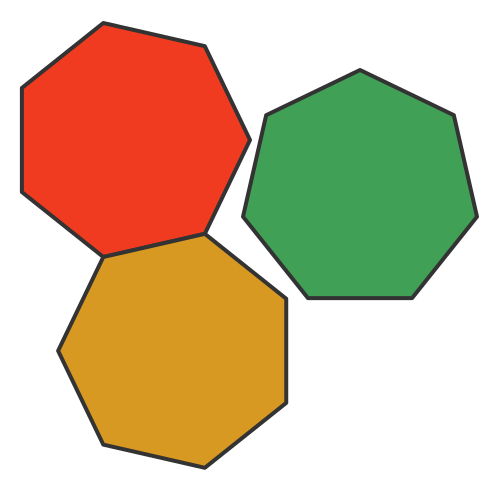
After joining two heptagons, the remaining angle is too small to add an extra heptagon. If we try this with an octagon(8 sides) or any shape with more sides, this will also fail for the same reason.
For regular tessellation, the vertices of the shapes must meet at a point, which means that the internal angles of all the shapes that meet at a vertex must add up to 360°. This table shows how this works for the three shapes:
| Shape | Interior angle | Number of vertices that meet |
|---|---|---|
| Equilateral triangle | 60° | 6 |
| Square | 90° | 4 |
| Regular pentagon | 108° | 3.3333 |
| Regular hexagon | 120° | 3 |
| More sides | >120° | <3 |
For a tessellating square, 4 vertices meet, and for a tessellating hexagon, 3 vertices meet.
So for a pentagon, the number of vertices would have to be greater than 3 but less than 4, so it can't be an integer. So regular pentagons can't tessellate.
For a shape with more than 6 sides, the number of vertices would have to be less than 3, which is impossible. So regular polygons with more than 6 sides can't tessellate.
See also

Join the GraphicMaths Newletter
Sign up using this form to receive an email when new content is added:
Popular tags
adder adjacency matrix alu and gate angle answers area argand diagram binary maths cartesian equation chain rule chord circle cofactor combinations complex modulus complex polygon complex power complex root cosh cosine cosine rule cpu cube decagon demorgans law derivative determinant diagonal directrix dodecagon eigenvalue eigenvector ellipse equilateral triangle euler eulers formula exercises exponent exponential exterior angle first principles flip-flop focus gabriels horn gradient graph hendecagon heptagon hexagon horizontal hyperbola hyperbolic function hyperbolic functions infinity integration by parts integration by substitution interior angle inverse hyperbolic function inverse matrix irrational irregular polygon isosceles trapezium isosceles triangle kite koch curve l system line integral locus maclaurin series major axis matrix matrix algebra mean minor axis n choose r nand gate newton raphson method nonagon nor gate normal normal distribution not gate octagon or gate parabola parallelogram parametric equation pentagon perimeter permutations polar coordinates polynomial power probability probability distribution product rule proof pythagoras proof quadrilateral questions radians radius rectangle regular polygon rhombus root sech segment set set-reset flip-flop sine sine rule sinh sloping lines solving equations solving triangles square standard curves standard deviation star polygon statistics straight line graphs surface of revolution symmetry tangent tanh transformation transformations trapezium triangle turtle graphics variance vertical volume volume of revolution xnor gate xor gate